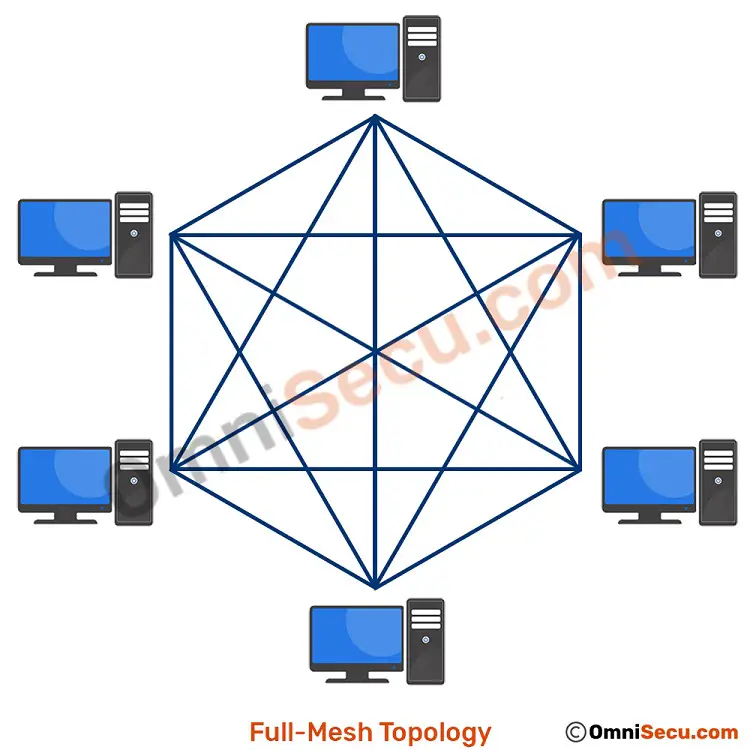Full-Mesh Topology
In wired full-mesh topology, each device on the network is connected together, creating connections between all device on the network. Full-Mesh topology provide an extreme level of redundancy when compared with other network topologies. The main advantage in full-mesh topology is, if any connection between two devices failed, there is always an alternate path exists to reach the destination.
Full-mesh topology works well in a small network. Example; less than five devices. But as the number of devices in the network increases, Full-Mesh topology based networks become complex. It is not easy to connect 500 computers together in full-mesh topology.

Advantages of full-mesh topology
Redundancy of paths is the main advantage of full-mesh topology. If a connection between two devices failed, there is always an alternate path available to reach the destination.
Because of the extreme level of redundancy, full-Mesh topology is often used in the core layer and distribution layer of hierarchical network designs. Full-Mesh topology is also used for server connectivity redundancy and site-to-site WAN connectivity redundancy.
Disadvantages of full-mesh topology
• The cabling costs of full-mesh topology-based network can be very high.
• It is not easy to troubleshoot a large full-Mesh topology based network.